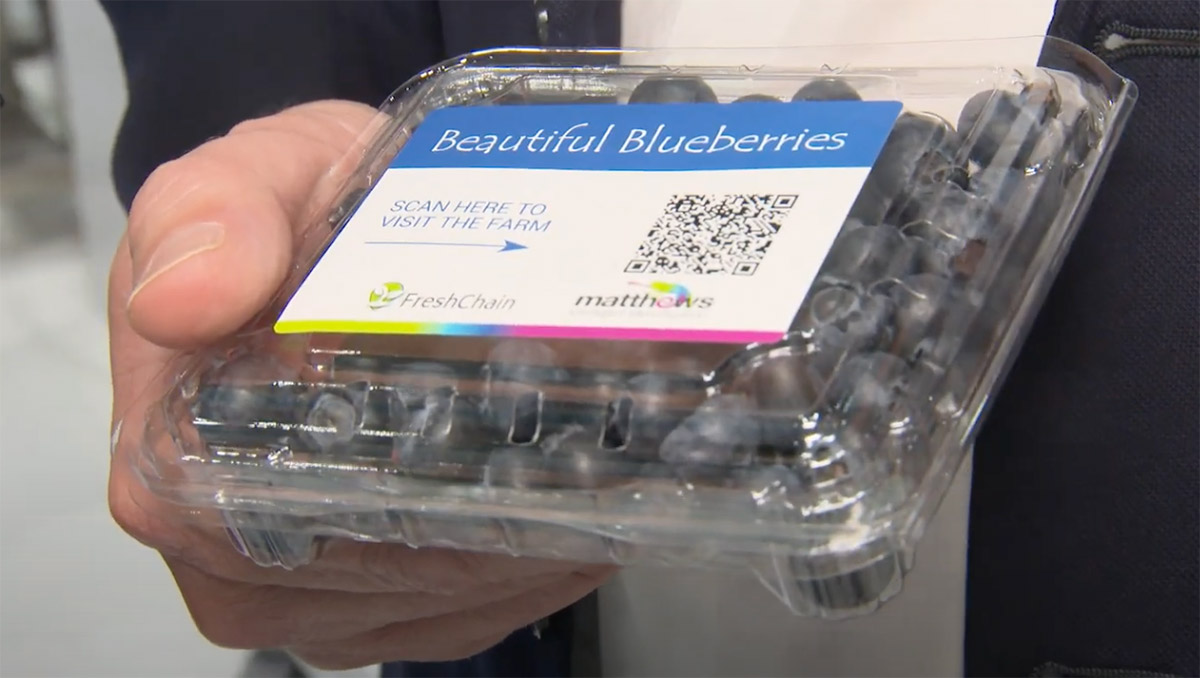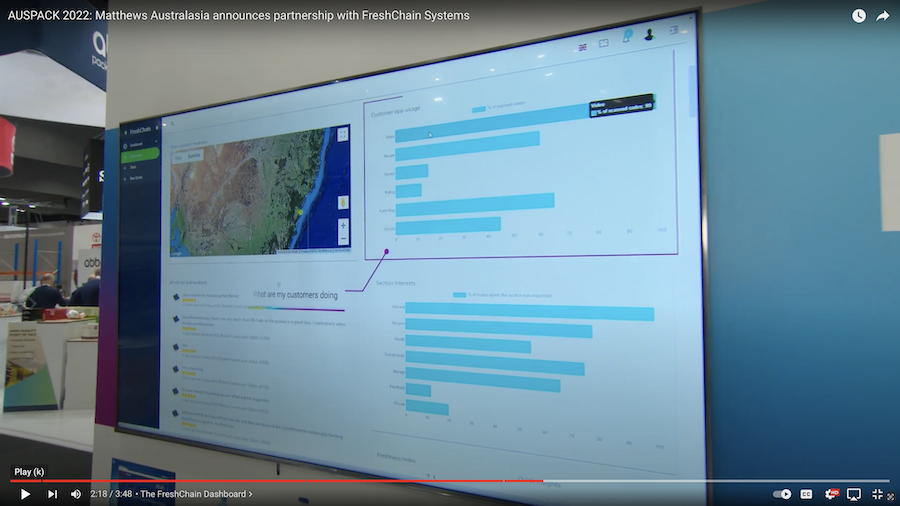Mar 24, 2023 by Mark Dingley
Only three months into the year, and it’s clear that traceability is a big priority for Australian manufacturers in 2023, as consumers show they care more than ever about where their products come from.
Some 71% of consumers are willing to pay a premium for brands that provide traceability, according to The IBM Institute for Business Value and the National Retail Federation.
From the farm to production, to transport, to warehouse, to store, to the shelf … retailers and their customers want access to the data that paints a complete picture of their products’ freshness, provenance and quality.
And it's not just consumers in Australia either: many international markets are demanding more traceability. They want suppliers to be able to prove exactly where the product has come from – right back to those who have grown it.
So how are manufacturers and producers answering their call? In this article, we rewind to see how traceability progressed in 2022 and what we can expect for the rest of 2023.

(Top image: a winter morning in June 2020, at Carwoola, NSW. Image credit: Jonathan Steinbeck)
Let’s start with the “what”, which will lead into the “why”. Traceability is the “ability to follow the movement of a product through stages of production, processing and distribution”, according to the Australian Government Department of Agriculture, Fisheries and Forestry.
There are lots of reasons traceability is important in your supply chain.
Deakin University says it's “not only for business risk-mitigation, but also for reasons of public safety, product integrity, supply chain efficiency and market access”.
It's no wonder, then, that among Australia's farmers, food producers and manufacturers, there is an appetite for solutions across science and technology to respond to the demand for traceable food.
The Australian Government is also investing $68.4 million into Australia’s agricultural-traceability systems, to show consumers – and the countries that Australia exports to – that our products are “safe, clean, and sustainable from paddock to plate, which will drive our access to premium overseas markets”.
The Government is offering grant funding between 2023-25 to support opportunities to secure premium pricing for agricultural industries, deliver improved traceability outcomes, and provide national leadership.
.jpg)

Traceability innovations surged in the past year. In our recent article about traceability, we summed up some of the leading technologies and promoting traceability in Australia in 2022.
One of these is Matthews Australasia's strategic partnership with FreshChain Systems – a blockchain-enabled paddock-to-plate assurance system that verifies the food you eat.

Working together allows producers to seamlessly link critical data through the supply chain while providing consumers full assurance around product authenticity, freshness and provenance.
FreshChain supplies serialised and encrypted codes for Matthews to convert to a unique QR code embedded with GS1 Digital Link URI. Using Matthews’ printing and labelling technologies, the serialised and unique codes can be linked to all levels of packaging for track-and-trace capabilities. Businesses can see upstream and downstream, chain-of-custody metrics, freshness index, consumer ratings and global scan locations, and compare quality metrics based on location, time of year, growing methods and carriers.
Consumers can also use their smartphone to scan this QR code with GS1 Digital Link URI to access lots of information about the product on the FreshChain platform, such as its journey, sustainability credentials and more.
Another critical innovation gaining traction in 2022 was the 2D barcode.
While not new, the use of 2D barcodes soared as retailers and manufacturers realised the many unique benefits this type of barcode offered; indeed GS1 Australia’s 2DBarcodes won the Packaging Design Innovation Award at AUSPACK in 2022.
2D barcodes provide item-level traceability, which cannot be achieved with 1D barcodes. This improves product safety and recall management, meaning that recalls can be done faster, more accurately and cost-effectively, ultimately reducing costs and risks for the brand.
The barcodes also provide detailed product information and provenance to consumers and trading partners, which helps protect the brand and consumer against counterfeit products.
While still an emerging technology with many more benefits yet to be explored, 2D barcodes are now recognised by the food & beverage industry, among others, for their extraordinary potential. For example, a broad range of fresh produce companies is now on board, including cherries, loose-leaf vegetables, strawberries and specialty produce.
In 2022, Matthews launched its 2D Barcode Learning Centre – check it out for full details of how the barcode is used in your industry.
Let's look at three top case studies for traceability in 2022.
In an Australian-first trial, 25,000 tonnes of sustainable Queensland raw sugar was shipped from Townsville to South Korea, with the product traceable through the entire supply chain.
The traceability trial was made possible with the help of blockchain technology.
Canegrowers, the peak body for Australian sugarcane growers, worked with KPMG Origins, a blockchain-based, track-and-trace platform, to map the sugar supply chain from paddock to package. This includes tracing the sugar from the paddock where it was grown, the chemicals used and all relevant certifications to ensure that the sugar is recorded as sustainable at every step.

A pilot project in 2022 saw potatoes and cherries traced from paddock to plate.
The CherryPlus traceability project used GS1 data standards and FreshChain's blockchain-enabled, paddock-to-plate assurance system to trace the products in real-time from property to store. Unique serialised QR codes with a GS1 Digital Link label were applied to Woolworths-branded punnets of organic cherries and bags of potatoes. The system then provided information about how the product moved along the supply chain and the time spent at each location.
As part of the project, researchers simulated a product recall to show how GS1 data standards can be used in an emergency such as a biosecurity incursion or food safety breach.
The GS1 Digital Link QR code on packaging also provided an opportunity for real-time feedback from consumers.

Ten South Australian barley growers are finding out exactly where their grain goes in a pilot project that traces their produce from paddock to pint.
Funded by the South Australian Government's AgTech Growth Fund in June 2022, the pilot brings together Coopers Brewery, Grain Producers South Australia and agritech startup recipient Trust Provenance to prove place of origin.
Barley growers are working with Trust Provenance's software to capture data points along the grain's journey, from farm to transport to bottling, then link into Coopers’ software to create a complete paddock-to-beverage traceability platform.
QR codes are also being put on bottles and cans from Coopers Brewery, so that beer lovers can see where their pint comes from. Each batch of barley has a unique ID, and, by scanning the QR code on the packaging, consumers can see the touch points at each stage of processing.
Another added benefit is increased biosecurity, with data enabling all parties to move fast in a biosecurity incident.
Rising consumer interest in the provenance of the products they that buy drives brands to become more transparent about where products come from.
But a product's story doesn't end when it leaves the farm – manufacturers must focus on the journey from paddock to plate.
Talk to our experts to find out how Matthews Australasia can help you improve your product traceability in 2023.